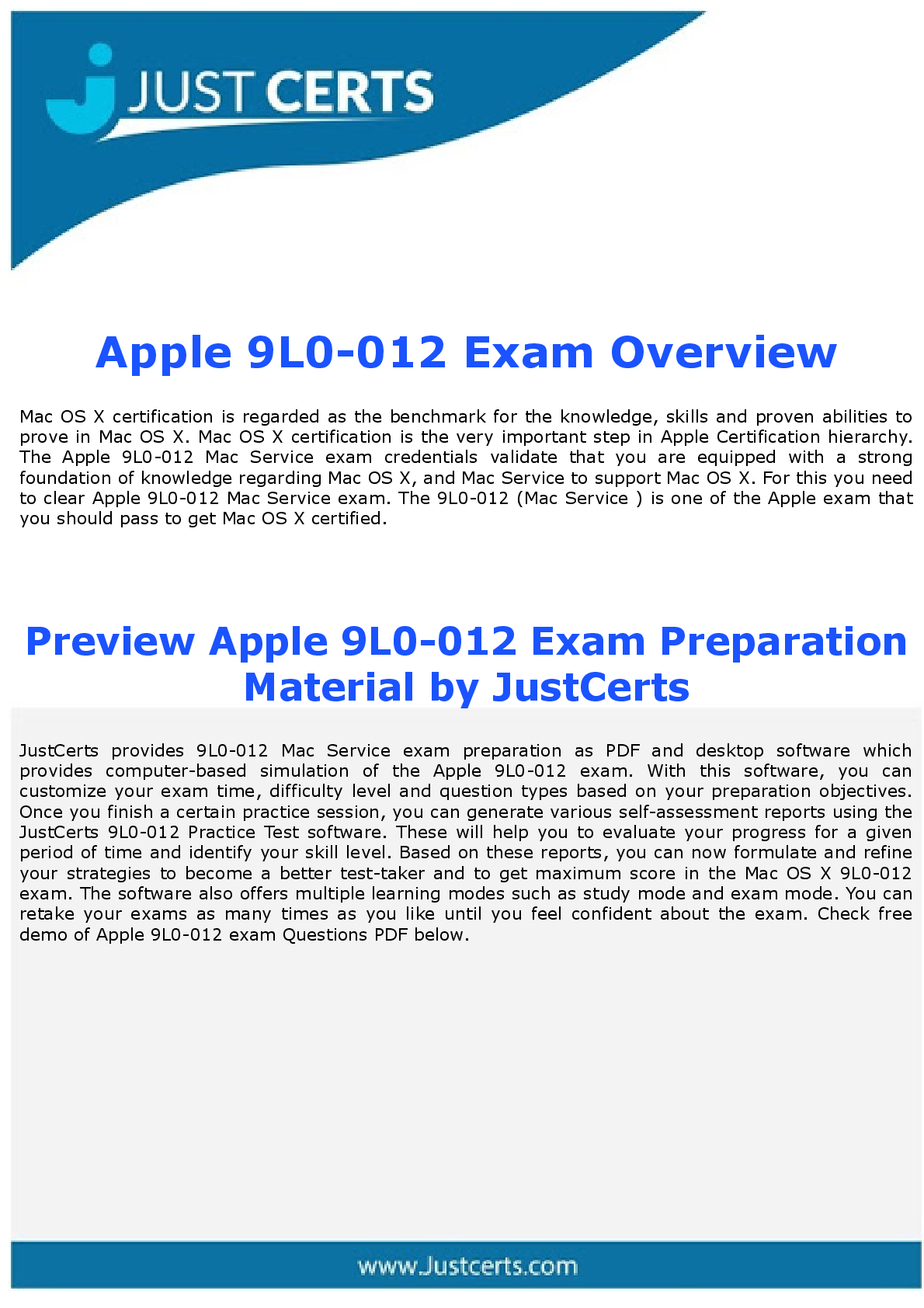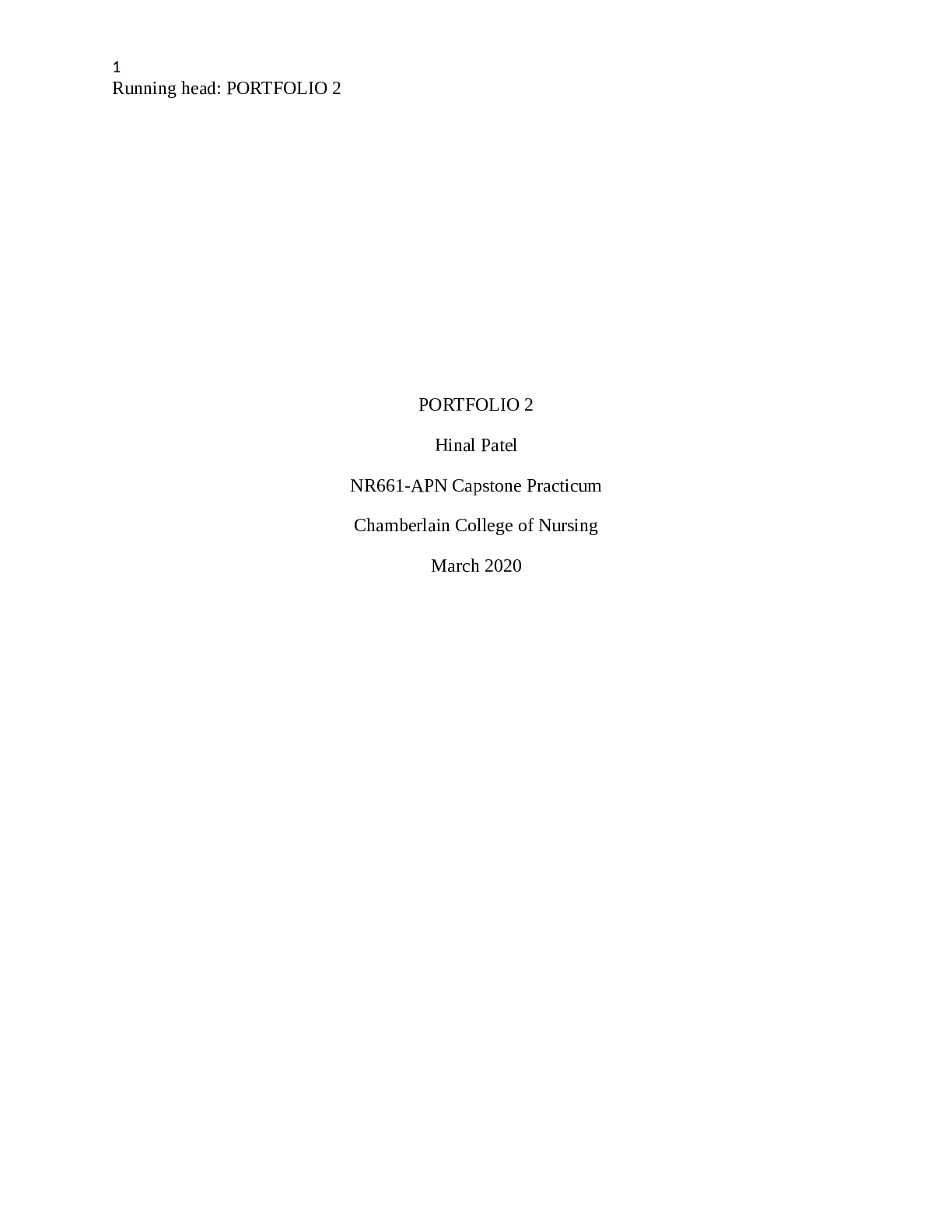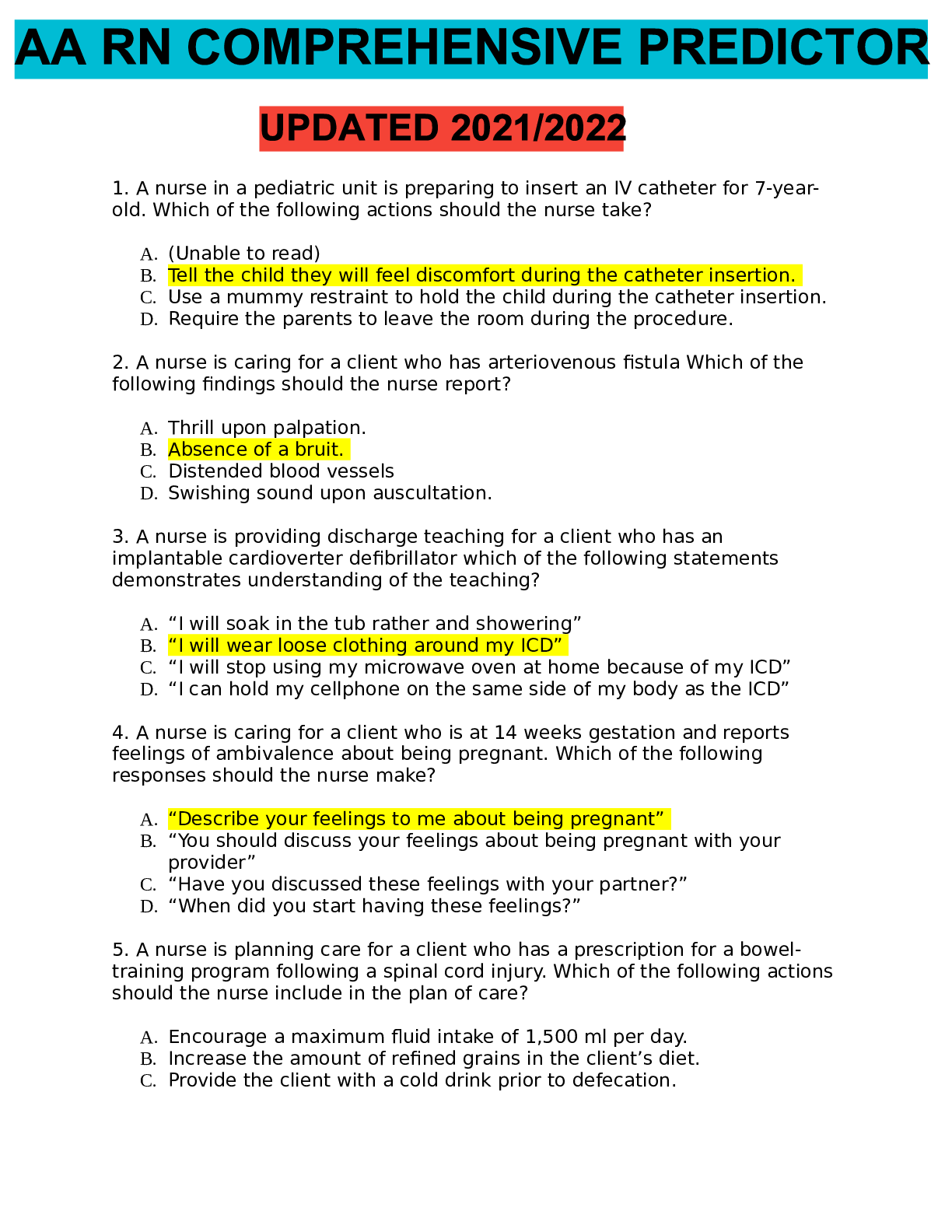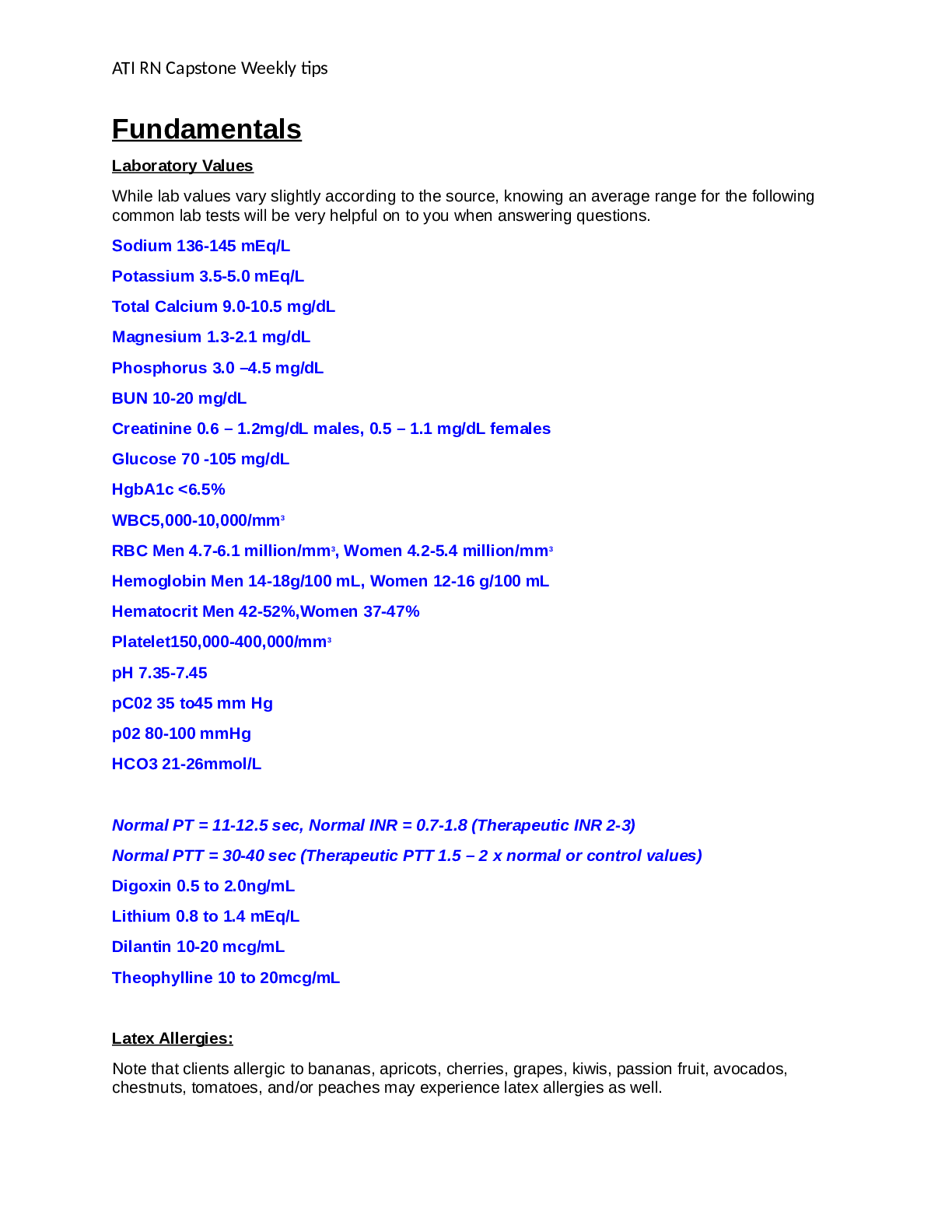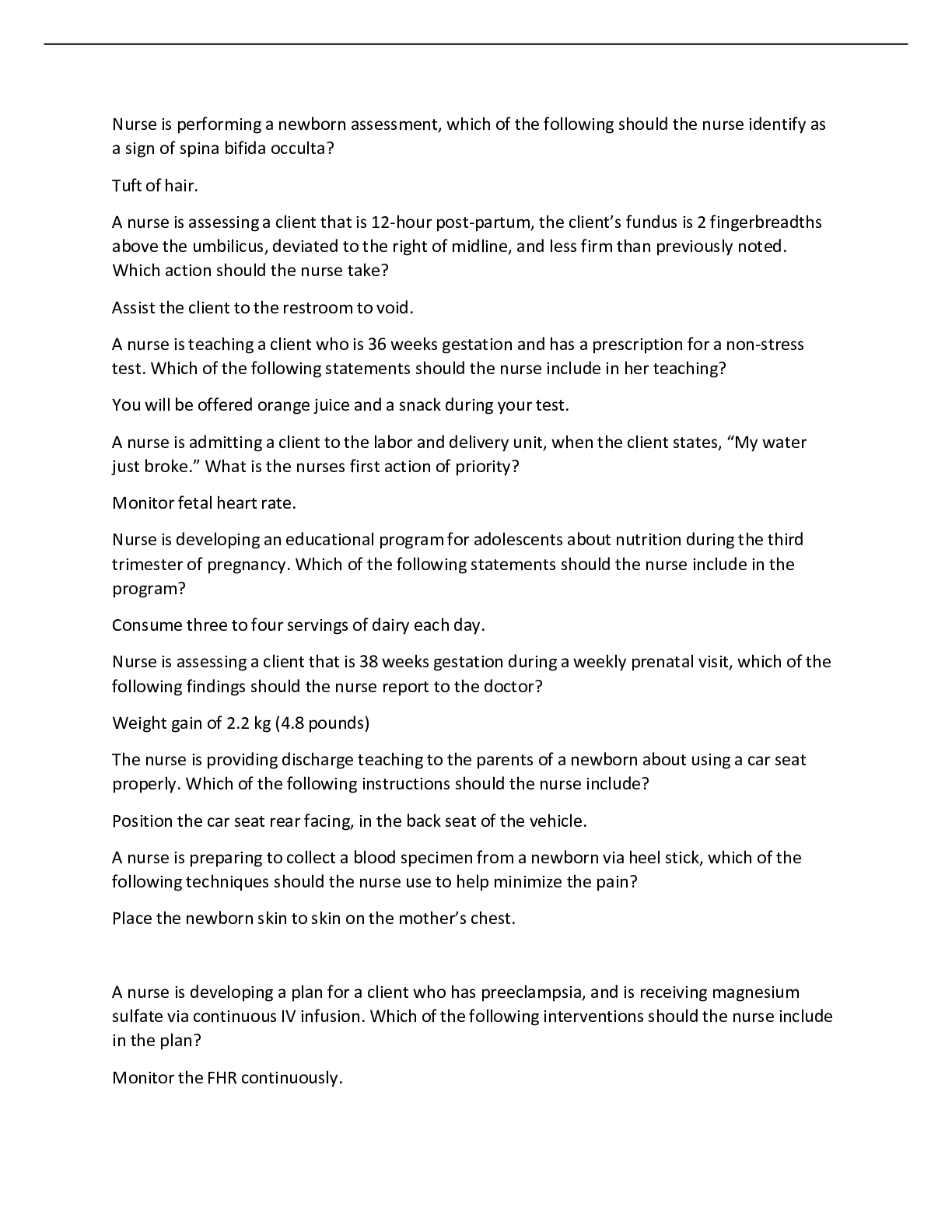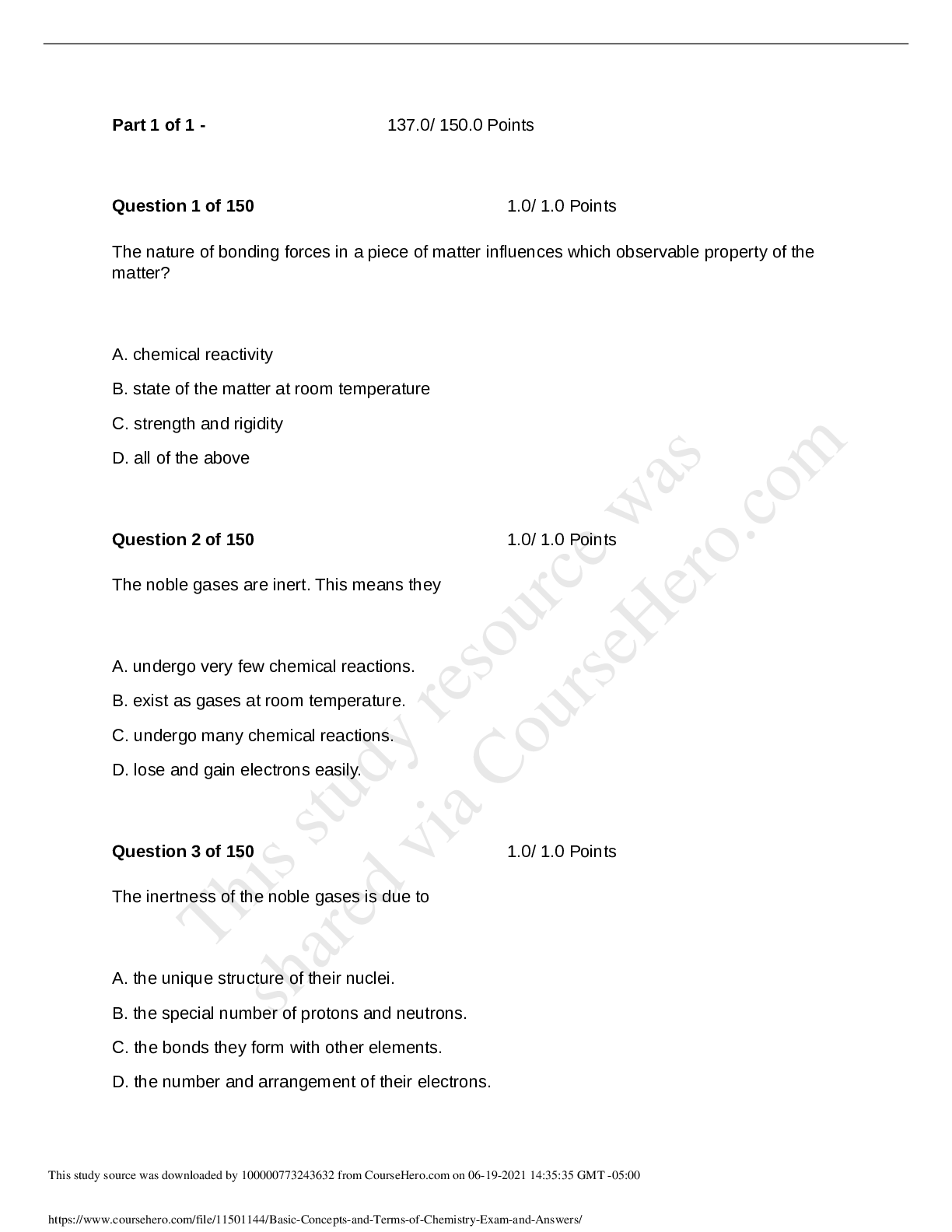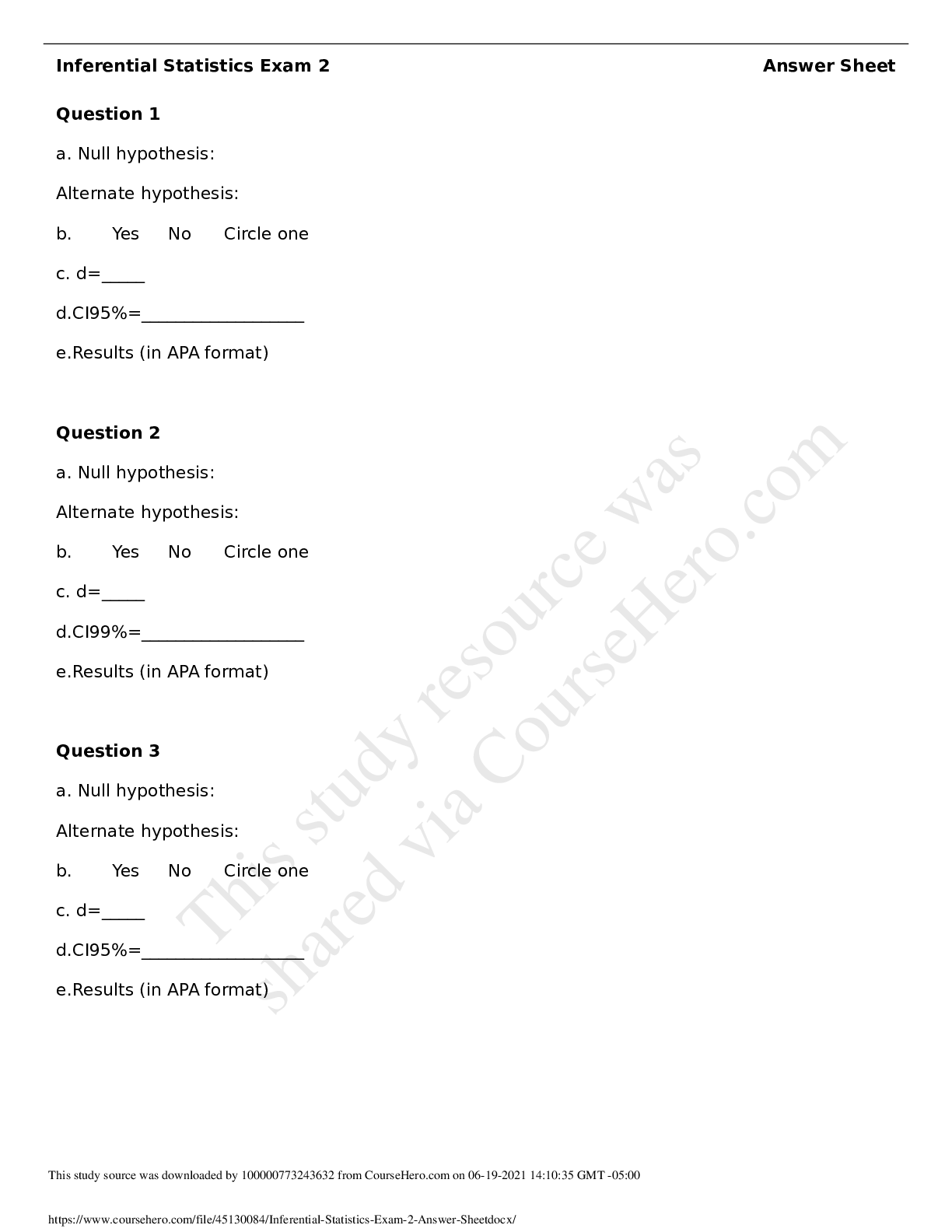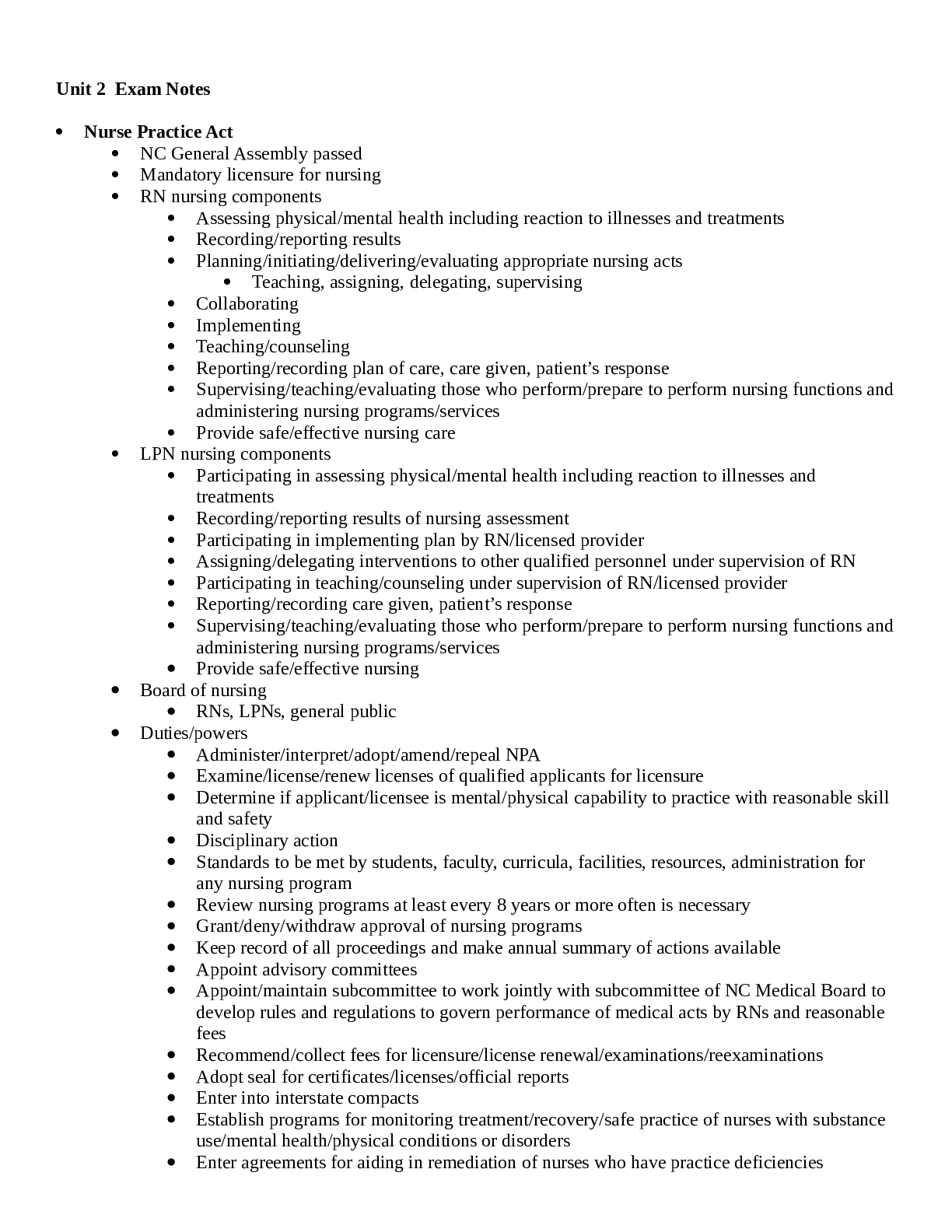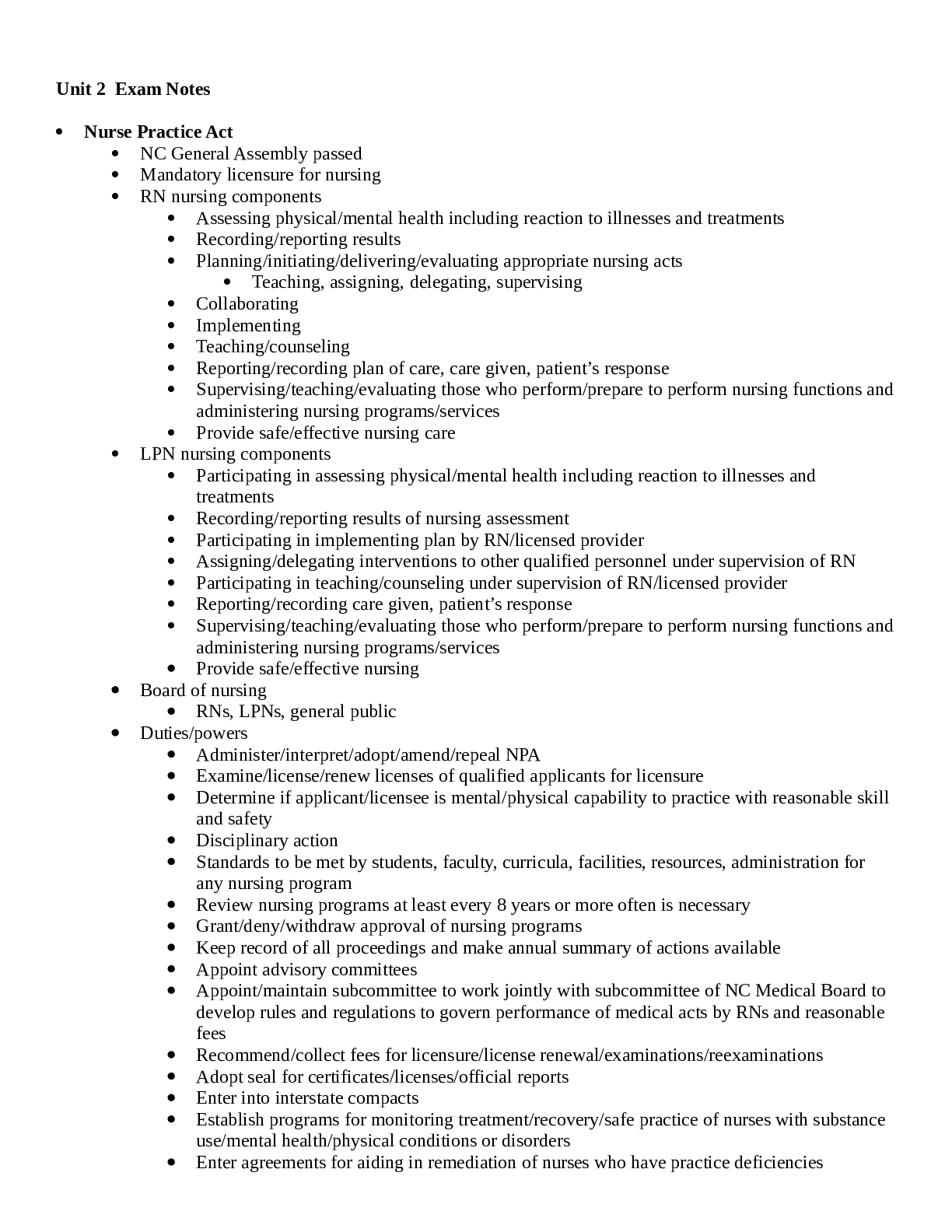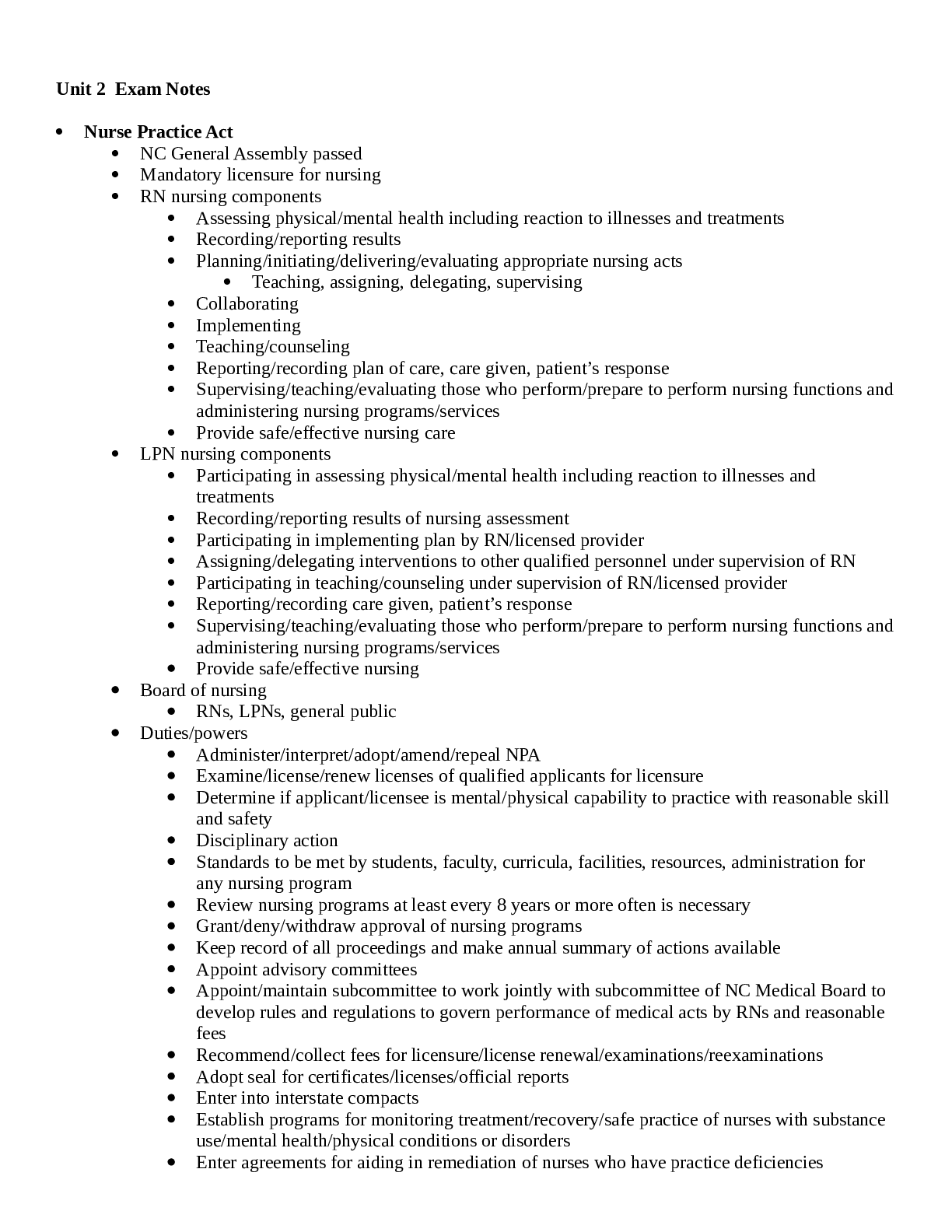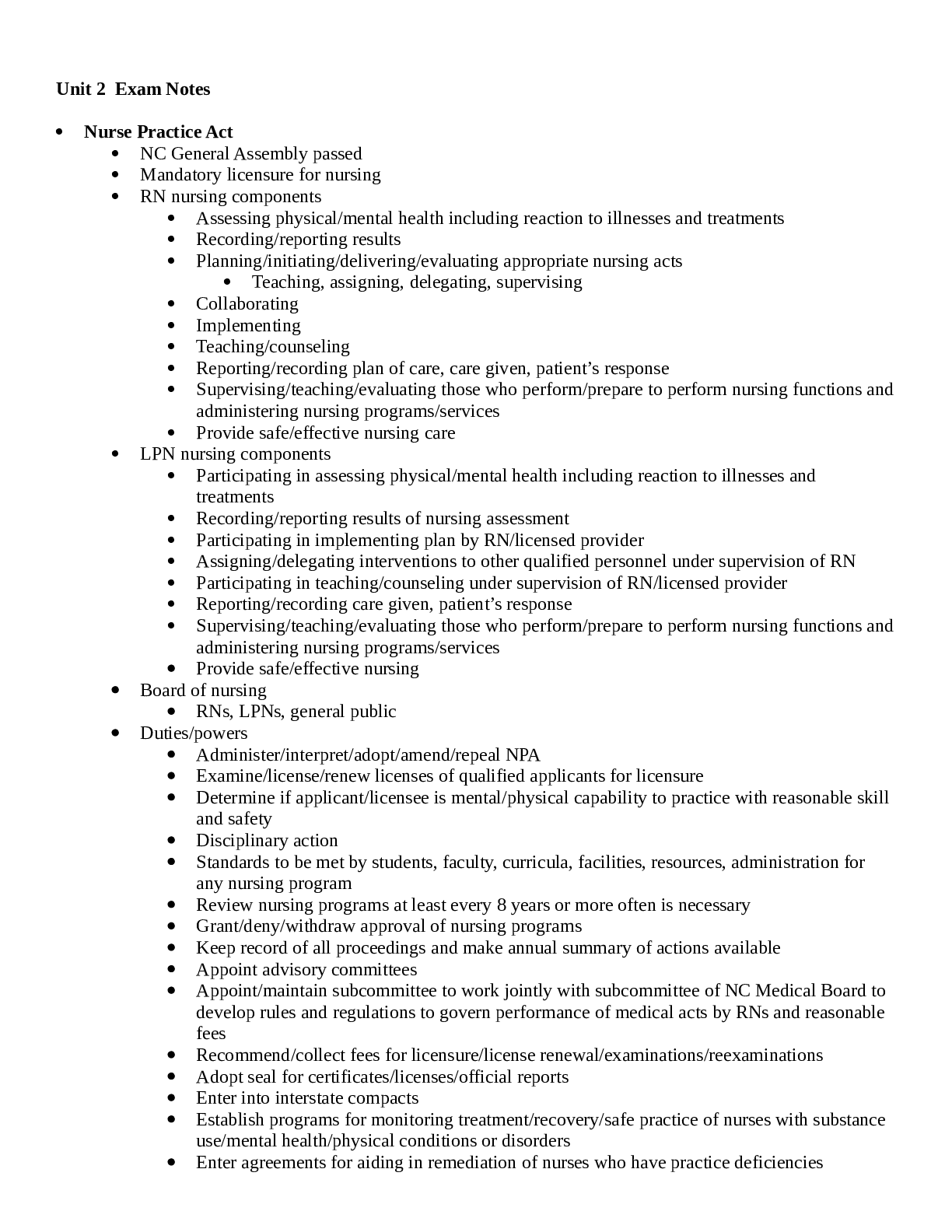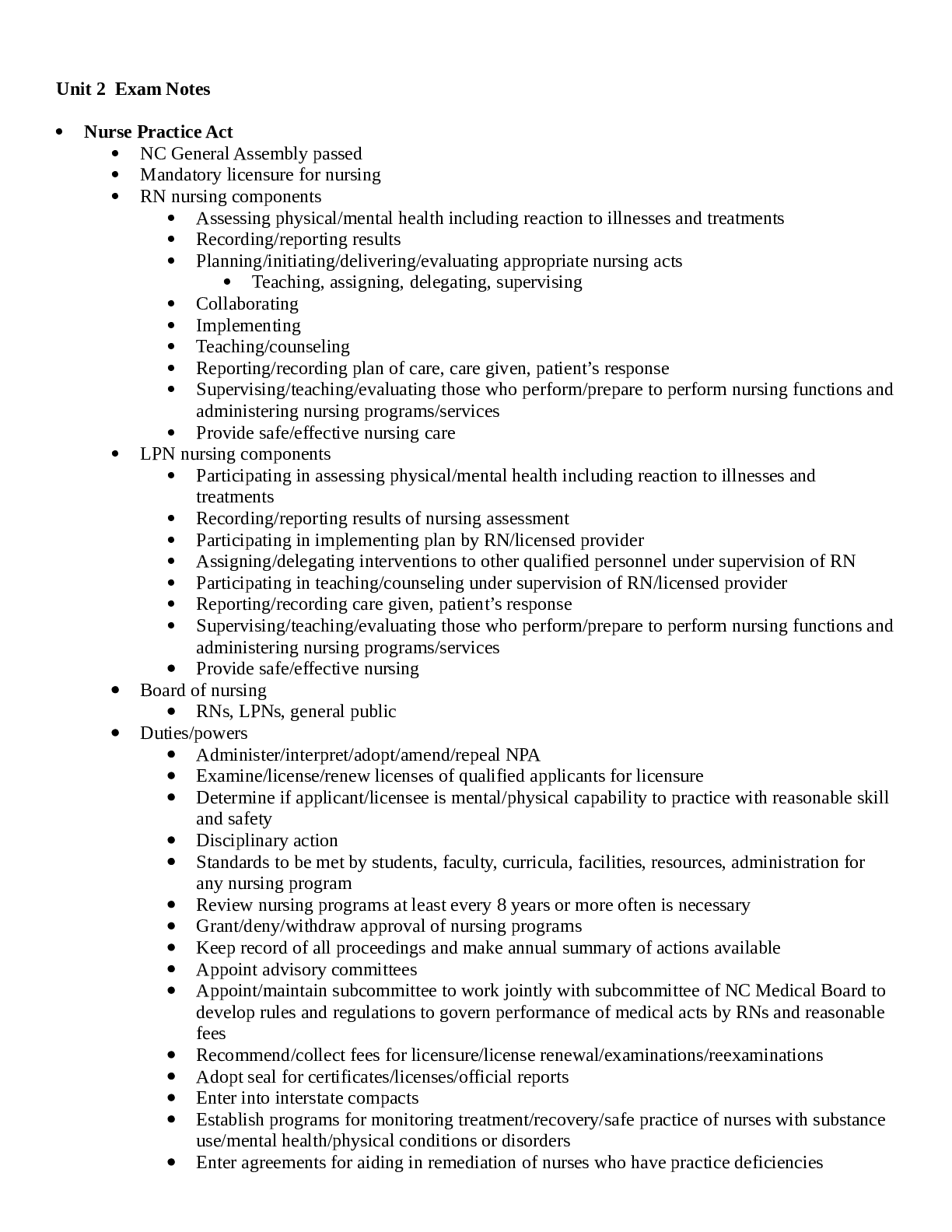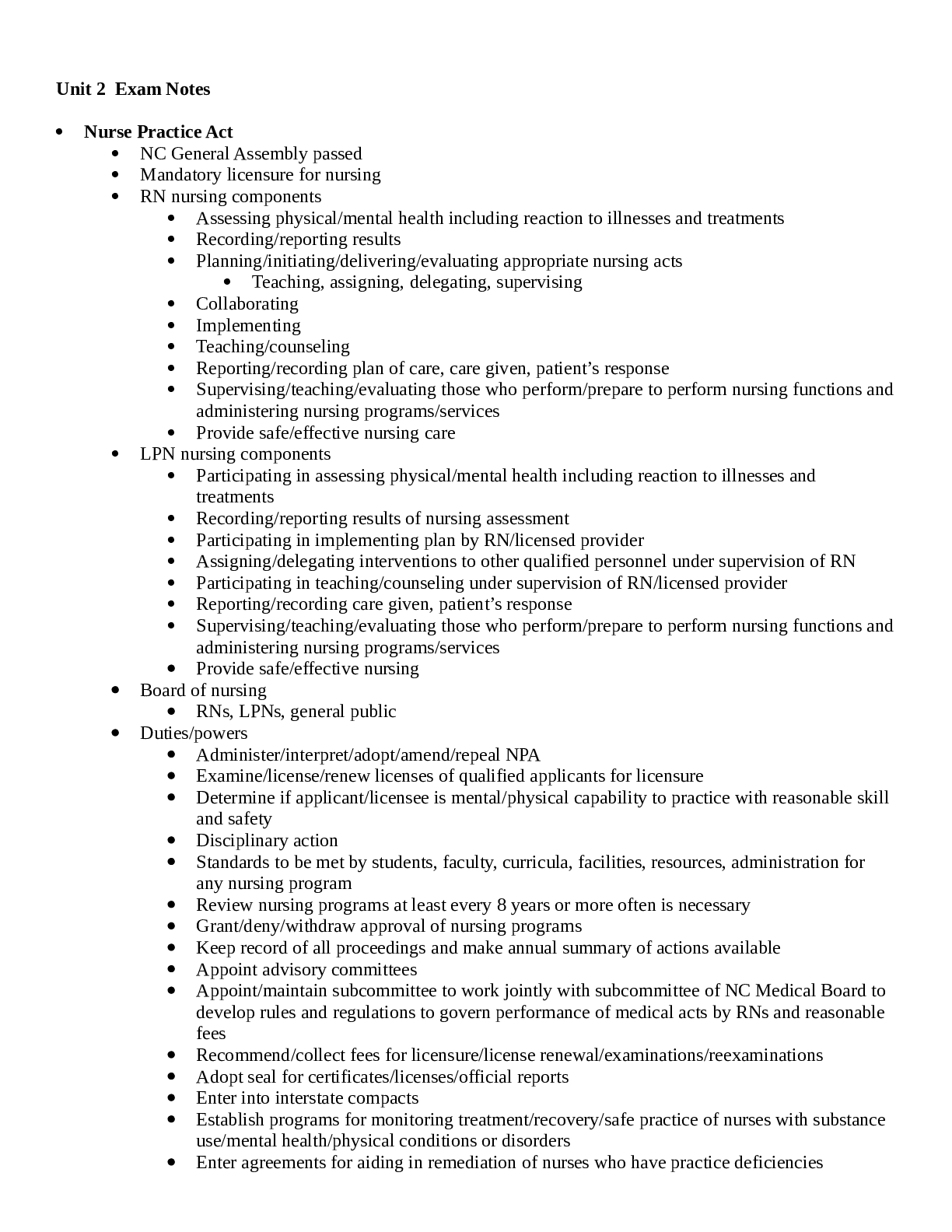Nursing Fundamentals Exam 2 Notes OLOL Nurs 2750.docx
Document Content and Description Below
Fundamentals Exam 2 Chapters: 4, 5, 27, 28, 31, 32, 39, and 48 Protection & Adaptation – Integumentary System Overview The skin is the body’s largest organ, comprising 15% of the total bod... y weight. The skin (1) acts as a protective barrier against disease-causing organisms, (2) is a sensory organ for pain, temperature, and touch, and (3) synthesizes vitamin D. Injury to the skin poses risks to safety and triggers a complex healing response. Knowing the normal healing pattern will assist in recognizing alterations that require intervention. Integumentary System Refers to skin, hair, scalp, nails Begin with health history (subjective data) Followed by the physical examination (objective data) – visible surfaces Sight, smell, and touch – inspection and palpation Patient’s health status – oxygenation, circulation, nutrition, local tissue damage, and hydration Integumentary Assessment Adequate lighting Equipment - gloves, penlight, and small centimeter ruler Room temperature Inspection Skin odors Subjective Data Health History Questions – Table 31-7, 31-10, 31-11 o Past history of skin disease, allergies, hives, psoriasis, or eczema? o Change in pigmentation or color? o Change in mole size, shape, color, tenderness? o Excessive dryness or moisture? o Pruritus or skin itching? o Excessive bruising? o Rash or lesions? o Medications: prescription and over-the-counter? o Hair loss? o Change in nails’ shape, color, or brittleness? o Environmental or occupational hazards? o Self-care behaviors? Additional history for infants and children o Does child have any birthmarks? o Any change in skin color as a newborn? Physiologic jaundice? Cyanosis? o Does child have any rash or sores? o Does child have diaper rash? o Does child have any burns or bruises? Where? How did it happen? o Has child been exposed to: Contagious skin conditions: scabies, impetigo, lice? Communicable diseases: measles, chicken pox, scarlet fever? Toxic plants: poison ivy? o Does child have habits such as nail biting or twisting hair? o What steps are taken to protect child from sun exposure? Additional history for adolescents o Skin problems such as pimples, blackheads? Additional history for aging adults o What changes have you noticed in your skin in last few years? o Any delay in wound healing? o Any change in feet: toenails; bunions, wearing shoes? o Falling: bruises, trauma? o History of diabetes or peripheral vascular disease? [Show More]
Last updated: 2 years ago
Preview 1 out of 68 pages

Buy this document to get the full access instantly
Instant Download Access after purchase
Buy NowInstant download
We Accept:

Reviews( 0 )
$25.50
Can't find what you want? Try our AI powered Search
Document information
Connected school, study & course
About the document
Uploaded On
May 27, 2021
Number of pages
68
Written in
Additional information
This document has been written for:
Uploaded
May 27, 2021
Downloads
0
Views
76

